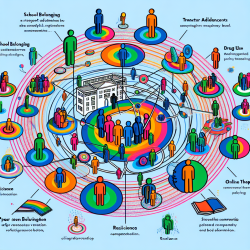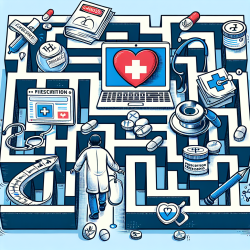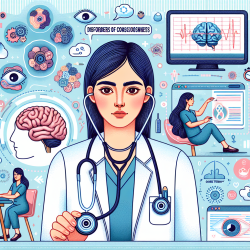The COVID-19 pandemic has revolutionized the way we approach healthcare, including the diagnosis and intervention of Autism Spectrum Disorder (ASD). A recent study, "Phase 2 and Later of COVID-19 Lockdown: Is it Possible to Perform Remote Diagnosis and Intervention for Autism Spectrum Disorder? An Online-Mediated Approach" by Antonio Narzisi, offers a promising glimpse into the future of telemedicine for ASD.
Here are some key takeaways from the study that can help practitioners enhance their skills and better serve their patients:
Embracing Telemedicine for Diagnosis
The study outlines a telemedicine working model for diagnosis composed of two phases: Pre-Specialistic Consultation (PSC) and Specialistic Assessment (SA). This model leverages both synchronous and asynchronous methods to gather data and interact with patients and their families.
- Pre-Specialistic Consultation (PSC): Families are provided with questionnaires and checklists to complete and are instructed on how to record videos of their child in various settings. These videos help clinicians observe the child's behavior in a natural environment.
- Specialistic Assessment (SA): Over four days, clinicians review the collected data and videos, conduct remote sessions with the child and parents, and use standardized tools like the ADOS-2 for assessment. The final diagnosis is based on clinical judgment supported by DSM-5 criteria, parent interviews, and video analysis.
Implementing Telemedicine for Intervention
The study also presents a telemedicine working model for intervention, which includes:
- Parent-Mediated Interventions: For preschoolers, two 30-minute sessions per week are conducted with the parent and child, guided by a therapist. An additional 60-minute session is held with the parents alone to discuss the child's progress and strategies.
- Speech and Communication Therapy: For school-aged children, two 30-minute online sessions per week are recommended. High-functioning children may also receive psychological support and psychotherapy sessions.
- Remote Parent Coaching: Parents are invited to share home videos and discuss individualized strategies with therapists during remote coaching sessions.
Benefits of Telemedicine
Telemedicine offers several advantages, especially during times of social distancing:
- Accessibility: Families in remote or underserved areas can access specialized care without the need for travel.
- Natural Environment: Observing children in their home setting provides a more accurate picture of their behavior and interactions.
- Parent Involvement: Increased parent participation and competence in managing their child's condition.
While telemedicine should not entirely replace in-person services, it provides a valuable alternative during emergencies and can complement traditional approaches. The study's findings encourage further research and adoption of telemedicine to enhance early diagnosis and intervention for ASD.
To read the original research paper, please follow this link: Phase 2 and Later of COVID-19 Lockdown: Is it Possible to Perform Remote Diagnosis and Intervention for Autism Spectrum Disorder? An Online-Mediated Approach.










